Scottish Heather - Versatile & Beautiful
Scottish heather is perfectly suited to the wild and rugged hills of Scotland.
'The most common type of heather in Scotland is 'Ling' heather which is hardy and fast growing, and loves wet soil.
With all the rain we get north of the border it's one very happy little plant!
Heather grows freely and abundantly spreading it's glorious purple hues across around five million acres of Scottish moorland, glens and hills.
Perhaps it's because it was (and still is) so readily available that the Scots have found so many practical uses for one of their national flowers.
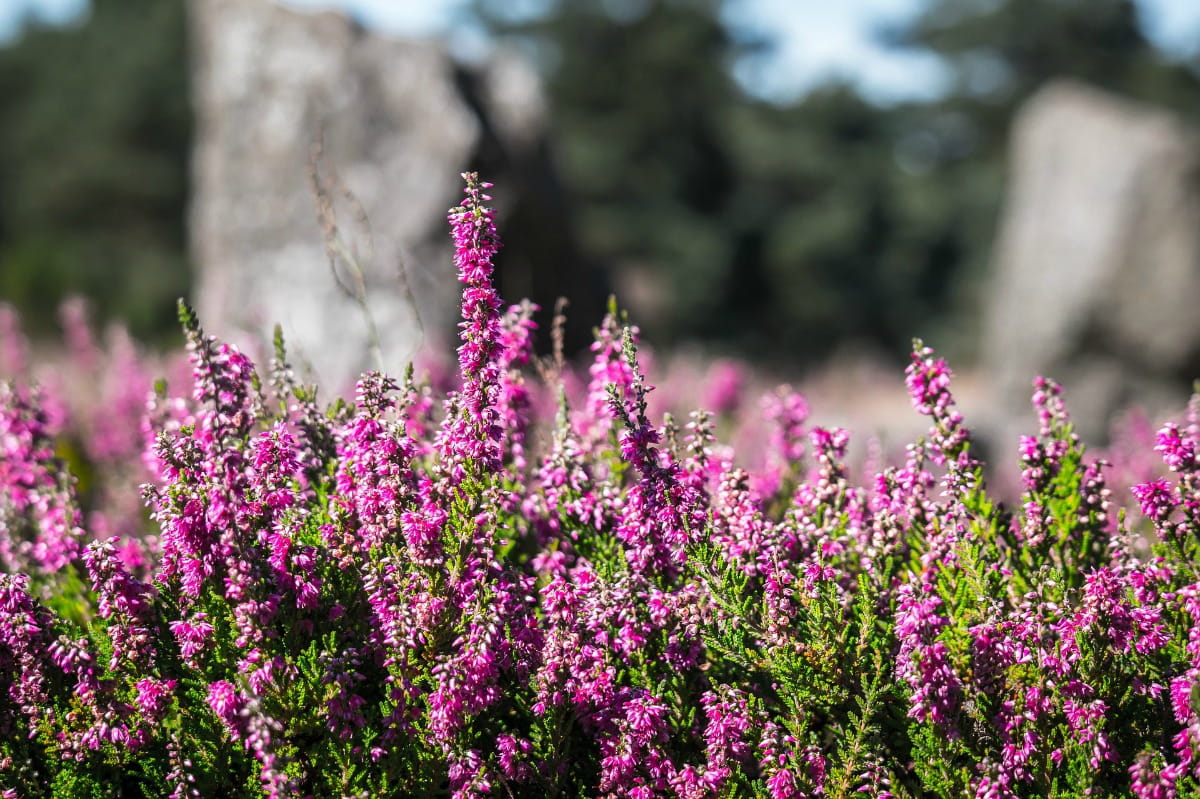
Origins of the word 'Heather'
The name 'Heather' may come from the old Scottish word 'haeddre' which is seen as far back as the 14th Century.
It may also have been called 'heddir' or 'hathar' at different periods of time.
Scottish Heather is also sometimes known as 'Ling Heather', referring to the old Norse word 'Lyng' which meant 'light in weight'.
Click on these links to jump to....
- About Heather
- It's Myths & Legends
- Why it's considered lucky
- History & traditional uses
- Two popular heather products
About Scottish Heather
The color of wild Scottish heather usually ranges from lilac to purple.
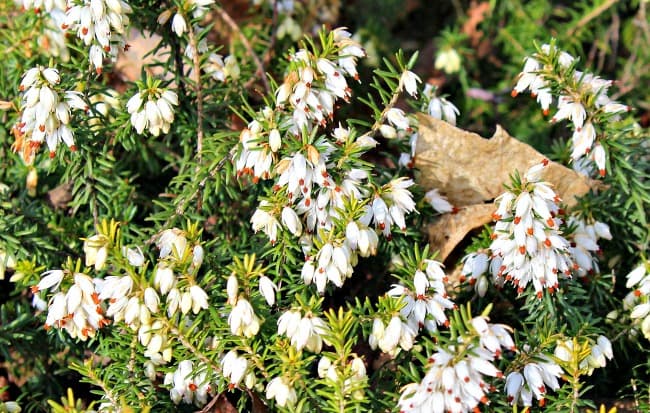
You can also find white heather growing wild but it's much less common - perhaps that's one of the reasons it's thought to be lucky.
Other species can be found in a variety of colors, from gold or copper, to red and even silver-grey.
Heather usually blooms twice a year in Scotland, in early summer and then during the late summer and early fall (Autumn).
Although it varies from year to year depending on weather, the best time to see the full beauty of Heather in Scotland is often between late July and early September. Yep, August is THE month!
If you're visiting Scotland in the summertime, it's a sight you don't want to miss!
Heather - Legends & Myths
Myths and magic are so tightly woven into Scotland's history that it's sometimes impossible to separate reality from legend.
Although in lots of ways we Scots are a down-to-earth race, we're also surprisingly sentimental, emotional and superstitious.
It's just one of the things that makes our country so endlessly fascinating!
Just like any other Scottish symbol, the humble heather plant has it's fair share of legends attached to it.
We're going to share two of the most popular ones with you.
Both of these stories have their origins in the very early days of Scottish history and we hope you'll be as intrigued by them as we are. Enjoy.
The Last Pictish King & Heather Ale:
One of the most well-known legends is centered around a confrontation between Viking raiders and the last surviving Pictish King.
Some accounts put it during the 4th Century AD, but as the Vikings didn't actually appear on Scottish soil until the end of the 8th Century, this is unlikely.... although of course, it's a legend, so there's a bit of 'wiggle room' here!
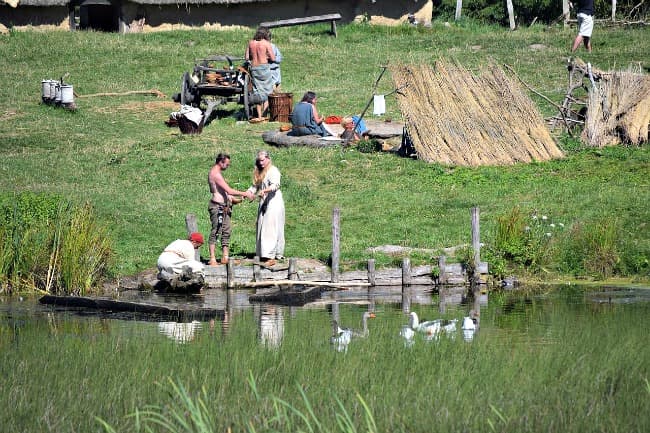
After their army is defeated, the Pictish King and his son find themselves cornered on a cliff-top, where the Viking chief tortures them in an attempt to obtain the secret recipe for Heather Ale.
The King of the Picts is quick witted, but doubts that his son is strong enough to withstand the torture without giving up the recipe.
So he makes a deal with the Viking Chief, saying that if his son is spared the torture and killed quickly, he himself will reveal the secret.
The young prince is then thrown off the cliff and into the sea where he drowns quickly.
BUT, the Pictish King doesn't uphold his end of the arrangement, and although it costs him his life he wins the battle and the recipe is safe.
In some variations of the tale the brave King takes the Viking over the edge of the cliff with him.
Why White Heather Is Lucky For Brides
Wild Scottish Heather is most often some shade of purple, with white heather being much more rare.
Legend has it that in the 3rd Century AD, Malvina (daughter of the legendary Scottish poet, Ossian), was betrothed (engaged to be married) to a Celtic warrior named Oscar.
Tragically (but not unexpectedly!), Oscar died in battle, and when Malvina heard the news she was heartbroken. The messenger who delivered the bad news, also delivered a spray of purple heather that Oscar had sent as a final token of his undying love for her.
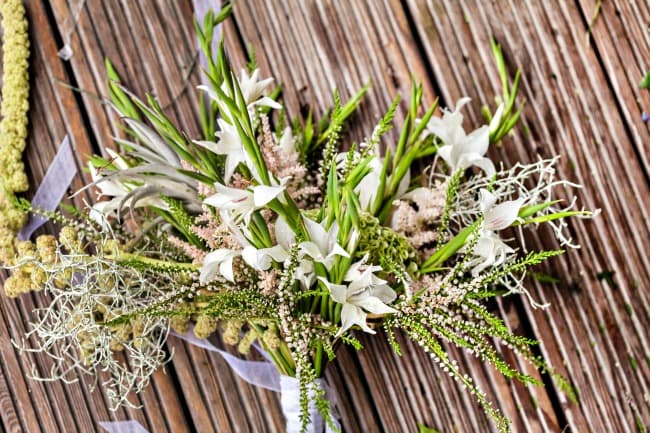
It's said that when Malvinas' tears fell onto the flowers in her hand, they immediately turned white, and this magical occurrence prompted her to say
'although it is the symbol of my sorrow, may the white heather bring good fortune to all who find it.'
Even today, white Heather is considered to be lucky, especially for brides, and adding a spray of it to your bouquet, on table decorations and so on is popular.
The Luckiest Plant On Earth?
But it's not only brides who believe that white Scottish Heather is a symbol of good luck.
As I mentioned earlier, the Scottish people are big on superstition, good (and bad) 'omens', legends, luck and so forth, and white heather is like a four-leaf clover to us.
In 1884 even Queen Victoria commented on this character trait during a visit to the Scottish Highlands. Describing an incident which involved one of her personal servants, she said .....
'... he espied a piece of white heather, and jumped off to pick it. No Hihglander would pass by it without picking it, for it was considered to bring good luck.'
Other myths surrounding the magical properties of white Scottish Heather include:
- Believed to grow only on ground where blood has
not been shed in battle.
- Also, more enchantingly, that it grows over the final resting
place of Faeries.
- White heather is closely associated with battles and conflict, and is said to bring good luck to whoever wears it.
- The
Chiefs of the Clan MacDonald are said to have attached a spray of wild
Scottish heather to their spears.
- It's also been linked to the MacAlister, MacIntyre, Ranald, Farquharson, MacPherson and Shaw clans, often being used as a clan symbol in the days before more sophisticated heraldic badges existed.
- Victorious after a 1544 battle, the Clan Ranald believed that the white heather they had worn was the reason for their success.
- Around 200 years later, Ewan of Cluny (Chief of the Clan MacPherson), was forced to flee and hide after the Battle of Culloden.

Cluny evaded capture at one point, when those searching for him didn't notice him sleeping in a patch of white Heather, reinforcing the belief that it was lucky.
With such a rich and varied history, it's no wonder Scottish Heather is one of the most enduring and recognizable symbols of Scotland.
In our opinion, the reputation is well deserved, don't you?
History & Traditional Uses
Heather has been plentiful in Scotland for as long as it's history has been written (and probably before that too).
The Druids (understood to be an ancient order of Celtic priests) considered it a sacred plant.
Even today some people consider it to have almost supernatural properties, sort of a 'charm', which is believed to offer protection from harm (especially rape or violent attack).
On a more mundane level it's used in aromatherapy to relieve a host of different problems.
Over thousands of years, the inventive, practical and resourceful Scots have found a whole host of uses for this natural bounty:
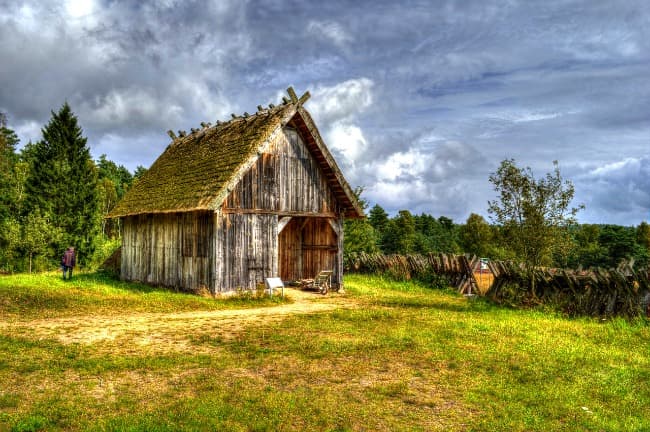
Construction
Especially on Scotland's islands, heather played a major role in building construction. It was used in walls, thatched roofs, ropes, pegs and more. It also appeared in the thatched roofs of mainland houses.
Interesting Tid-Bit!
The virtues of a mattress made from Scottish heather were described by King James VI's tutor, George Buchanan like this:
'...... so pleasant, that it may vie in softness with the finest down, while in salubrity it far exceeds it.... and restores strength to fatigued nerves, so that those who lie down languid and weary in the evening, arise in the morning vigorous and sprightly.'
Mattresses & Beds
Since ancient times (going back thousands of years before Christ was born) dried Scottish heather was used as a sort of fragrant and bouncy mattress. Evidence of this has been found in a 4000 year old village on the island of Skara Brae in the Orkneys.
Historically, heather beds were considered to be just as comfortable as feather beds because the dried stalks and flowers are so light and soft.
A bed made from heather had the added extra of original aromatherapy, and the fragrant flower heads were usually placed towards the top of the mattress where the sleeper's head would lie.
Household Tools
Heather stems are tough, strong and resilient (like the Scottish people), and were used in making a whole variety of implements including brooms, farming tools such as hoes or rakes and ropes.
To dye cloth - the beautiful color of highland heather was perfect for dying roughspun cloth and wool.
Depending on the type of heather used (and what it was combined with) it could produce muted yellow, gold, bronze, gray, green and purple colors.
Even today 'heather' is a popular color in traditional Scottish clothing - and of course it features heavily in many tartans.
Medicinal and therapeutic
Heather was believed to have some amazing medicinal properties, and was used by ancient Scots to treat all sorts of conditions and ailments.
These included nervousness and anxiety, coughs, consumption (now known as TB), digestive issues, poisoning, blindness, arthritis, rheumatism and more.
Heather is still used today in a whole slew of different health care related products including essential oils, homeopathic products, ointments, salves and more.
Scottish heather was also made into a variety of drinks including heather ale and heather tea. If you'd like a taste of heather tea, Edinburgh Tea & Coffee company offer a Scottish Heather infused black tea (in tea bag form) that is great any time of day. They also offer thistle tea, whisky tea and Highland tea blends to choose from.
Today Heather is still used effectively in aromatherapy products to treat digestive upset, skin problems, coughs, anxiety and insomnia.
Heather can also be used as an internal cleanser and detoxifier, due to it's slightly diuretic properties.
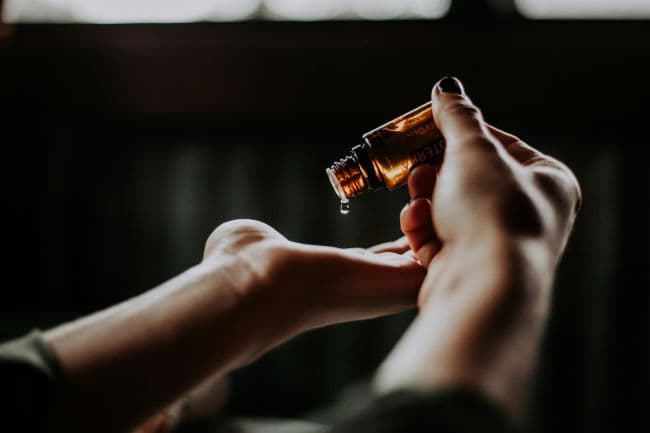
And last, but not least, heather essential oil can be used in room diffusers as well as the most deliciously scented soaps, candles, perfumes and more.... each can whisk you away to a land of clean air, sparkling water and scudding clouds, where the sharp scent of pine mixes with gentle gentle scent of highland heather.
Mmmm.... wonderful :)
Want to grow your very own patch of heather. These Scottish Heather Seeds (Calluna Vulgaris) will let you do just that!
Two Popular Scottish Heather-Infused Goodies
So, as you now know, heather appears in so many aspects of Scottish life (both historically and still today) that it's not surprising that this humble little plant is so well-known worldwide.
Before we finish up here, let's take a look at two of the most famous heather-based products:
Heather Ale
The brewing of Scotland's Heather Ale goes back thousands of years, and is thought to be one of the oldest types of ale in the world.
Heather Ale: A Galloway Legend
The first few lines of Robert Louis Stevenson's poem go like this.......
'From the bonny bells of heather,
They brew a drink Langsyn
Was sweeter far than honey
Was stronger far than wine.'
Sounds pretty good doesn't it?
On the tiny Isle of Rum, off the west coast of Scotland, 3000 year old shards of pottery have been found which contain traces of a fermented drink made from Heather!
It's believed that the Picts developed a recipe for Ale that relied entirely on the Heather plant for its' sweetness and fermentation.
It was valued so highly that the recipe was kept a secret, with only the King and his first-born son knowing what went into it.

This 'secret potion' was then be passed on down through the generations.
This brew was immortalized in the poem entitled 'HEATHER ALE : A Galloway Legend' by Robert Louis Stevenson (see box on the right)
It tells, in verse, the legend of the Pictish King who sacrificed both his life, and that of his son, to protect the secret recipe.
All I can say is - that must have been some ale!
Brewing your own Heather Ale
If you're interested in learning more about brewing heather ale yourself, here are a couple of resources that might point you in the right direction:
Heather Honey
Bees work for months to collect enough pollen to produce this beautiful thick, golden Scottish Heather Honey with the unique and delicate taste of Scottish heather.
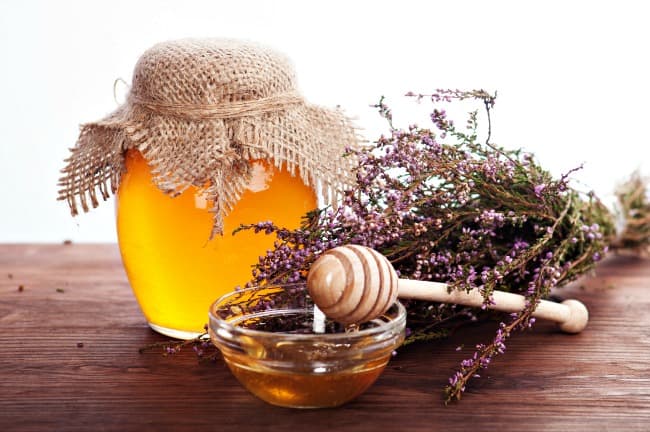
As well as being delicious, heather honey is rich in minerals and was traditionally used in medicinal drinks and potions.
Today you can get mouth-watering Scottish heather honey, honey-jam and honey-marmalade, as well as tea with the same wonderful flavor.
Yummy!
The Scottish Heather Book is dedicated to the history and character of our special Scottish Heather.
It explores the legends behind the flower and giving an interesting and in-depth look at how this humble plant came to be such a well-known part of Scotland's symbolism.
It's easy-to-read style, plus poetry and literary excerpts from historically famous Scots, make this book worth a great addition to your shelves.
You Might Also like:
- Home
- Symbols & Emblems
- Scottish Heather